The role of intracellular signaling in insulin-mediated regulation of drug metabolizing enzyme gene and protein expression
- PMID: 17097148
- PMCID: PMC1828071
- DOI: 10.1016/j.pharmthera.2006.07.004
The role of intracellular signaling in insulin-mediated regulation of drug metabolizing enzyme gene and protein expression
Abstract
Endogenous factors, including hormones, growth factors and cytokines, play an important role in the regulation of hepatic drug metabolizing enzyme expression in both physiological and pathophysiological conditions. Diabetes, fasting, obesity, protein-calorie malnutrition and long-term alcohol consumption produce changes in hepatic drug metabolizing enzyme gene and protein expression. This difference in expression alters the metabolism of xenobiotics, including procarcinogens, carcinogens, toxicants and therapeutic agents, potentially impacting the efficacy and safety of therapeutic agents, and/or resulting in drug-drug interactions. Although the mechanisms by which xenobiotics regulate drug metabolizing enzymes have been studied intensively, less is known regarding the cellular signaling pathways and components which regulate drug metabolizing enzyme gene and protein expression in response to hormones and cytokines. Recent findings, however, have revealed that several cellular signaling pathways are involved in hormone- and growth factor-mediated regulation of drug metabolizing enzymes. Our laboratory has reported that insulin and growth factors regulate drug metabolizing enzyme gene and protein expression, including cytochromes P450 (CYP), glutathione S-transferases (GST) and microsomal epoxide hydrolase (mEH), through receptors which are members of the large receptor tyrosine kinase (RTK) family, and by downstream effectors such as phosphatidylinositol 3-kinase, mitogen activated protein kinase (MAPK), Akt/protein kinase B (PKB), mammalian target of rapamycin (mTOR), and the p70 ribosomal protein S6 kinase (p70S6 kinase). Here, we review current knowledge of the signaling pathways implicated in regulation of drug metabolizing enzyme gene and protein expression in response to insulin and growth factors, with the goal of increasing our understanding of how disease affects these signaling pathways, components, and ultimately gene expression and translational control.
Figures


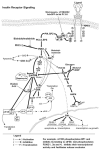
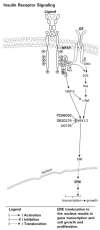



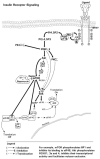






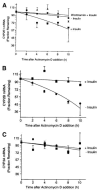
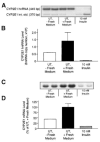

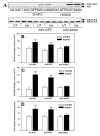
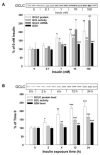
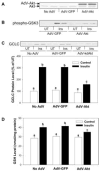
Similar articles
-
Suppression of xenobiotic-metabolizing enzyme expression in rats by acriflavine, a protein kinase C inhibitor. Effects on epoxide hydrolase, glutathione S-transferases, and cytochromes p450.Drug Metab Dispos. 1998 Jan;26(1):66-72. Drug Metab Dispos. 1998. PMID: 9443855
-
Insulin and glucagon signaling in regulation of microsomal epoxide hydrolase expression in primary cultured rat hepatocytes.Drug Metab Dispos. 2003 Oct;31(10):1260-8. doi: 10.1124/dmd.31.10.1260. Drug Metab Dispos. 2003. PMID: 12975336
-
Phosphatidylinositol 3-kinase and Ras/mitogen-activated protein kinase signaling pathways are required for the regulation of 5-aminolevulinate synthase gene expression by insulin.Exp Cell Res. 2001 Dec 10;271(2):201-13. doi: 10.1006/excr.2001.5386. Exp Cell Res. 2001. PMID: 11716532
-
Steroid regulation of drug-metabolizing cytochromes P450.Curr Drug Metab. 2011 Feb;12(2):154-72. doi: 10.2174/138920011795016854. Curr Drug Metab. 2011. PMID: 21395541 Review.
-
Potential application of biliverdin reductase and its fragments to modulate insulin/IGF-1/MAPK/PI3-K signaling pathways in therapeutic settings.Curr Drug Targets. 2010 Dec;11(12):1586-94. doi: 10.2174/1389450111009011586. Curr Drug Targets. 2010. PMID: 20704544 Review.
Cited by
-
Pituitary and brain dopamine D2 receptors regulate liver gene sexual dimorphism.Endocrinology. 2015 Mar;156(3):1040-51. doi: 10.1210/en.2014-1714. Epub 2014 Dec 29. Endocrinology. 2015. PMID: 25545383 Free PMC article.
-
Interactions between Alcohol Consumption and Adjuvant Hormone Therapy in Relation to Breast Cancer-Free Survival.J Breast Cancer. 2018 Jun;21(2):158-164. doi: 10.4048/jbc.2018.21.2.158. Epub 2018 Jun 20. J Breast Cancer. 2018. PMID: 29963111 Free PMC article.
-
Impact of obesity on ovotoxicity induced by 7,12-dimethylbenz[a]anthracene in mice.Biol Reprod. 2014 Mar 27;90(3):68. doi: 10.1095/biolreprod.113.114215. Print 2014 Mar. Biol Reprod. 2014. PMID: 24501177 Free PMC article.
-
Effect of a glutathione S-transferase inhibitor on oxidative stress and ischemia-reperfusion-induced apoptotic signalling of cultured cardiomyocytes.Exp Clin Cardiol. 2011 Fall;16(3):92-6. Exp Clin Cardiol. 2011. PMID: 22065940 Free PMC article.
-
Sex differences in the expression of hepatic drug metabolizing enzymes.Mol Pharmacol. 2009 Aug;76(2):215-28. doi: 10.1124/mol.109.056705. Epub 2009 May 29. Mol Pharmacol. 2009. PMID: 19483103 Free PMC article. Review.
References
-
- Abdelmegeed MA, Carruthers NJ, Kim SK, Woodcroft KJ, Novak RF. Acetoacetate induces cytochrome P450 (CYP) 2E1 protein and suppresses CYP2E1 gene transcription in primary cultured rat hepatocytes. J Pharmacol Exp Ther. 2005;315:203–213. - PubMed
-
- Abernethy DR, Greenblatt DJ, Divoll M, Shader RI. Enhanced glucuronide conjugation of drugs in obesity: studies of lorazepam, oxazepam, and acetaminophen. J Lab Clin Med. 1983;101:873–880. - PubMed
-
- Agius C, Gidari AS. Effect of streptozotocin on the glutathione S-transferases of mouse liver cytosol. Biochem Pharmacol. 1985;34:811–819. - PubMed
-
- Alemzadeh R, Tushaus KM. Modulation of adipoinsular axis in prediabetic zucker diabetic fatty rats by diazoxide. Endocrinology. 2004;145:5476–84. - PubMed
-
- Alessi DR, Cuenda A, Cohen P, Dudley DT, Saltiel AR. PD 098059 is a specific inhibitor of the activation of mitogen-activated protein kinase kinase in vitro and in vivo. J Biol Chem. 1995;270:27489–27494. - PubMed
Publication types
MeSH terms
Substances
Grants and funding
LinkOut - more resources
Full Text Sources
Medical
Research Materials
Miscellaneous

